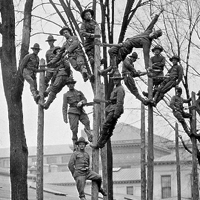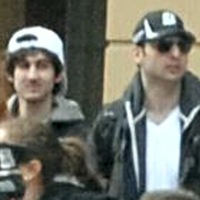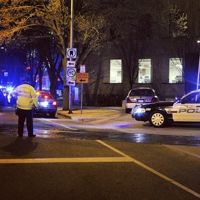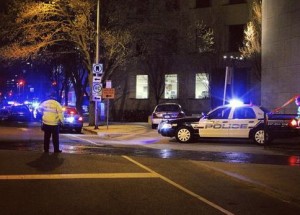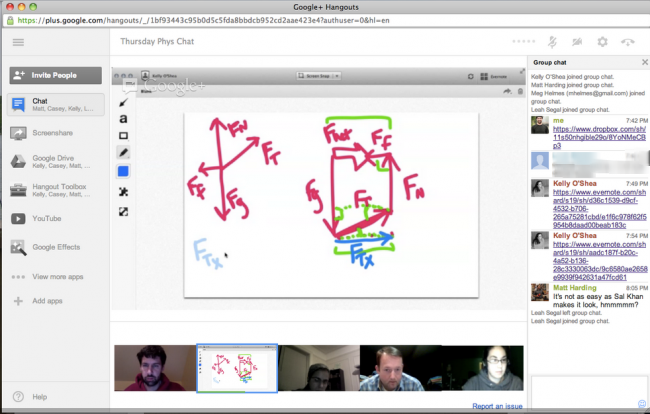We just completed our 10th edcampPDX – a chance to get pumped up for the new school year, network and share new ideas with our colleagues. Here’s our Storify Twitter archive. Check back for updates as attendees have time to reflect and tweet on the awesomeness we shared.
Our Shared #EdCampPDX Notes | Our Wiki here
Many thanks to our host @seani and Riverdale Grade School 11733 SW Breyman, Portland, OR 97219
How To Use Social Media to Network Your PLN
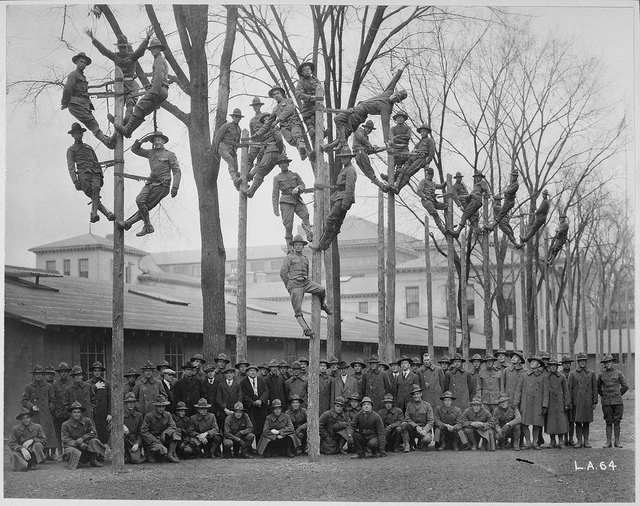 I’m getting ready for the fall semester at University of Portland School of Education where I teach grad and undergrad social studies methods class. Our class blog EdMethods.
I’m getting ready for the fall semester at University of Portland School of Education where I teach grad and undergrad social studies methods class. Our class blog EdMethods.
This year I’ve decided to become much more purposeful in training my students on how to use social media for their own professional growth. As a proof of concept, I thought I’d crowdsource for some ideas that I might incorporate into my social media course strand. If it’s such a useful tool, time for some “dogfooding.”
I posted the following tweet
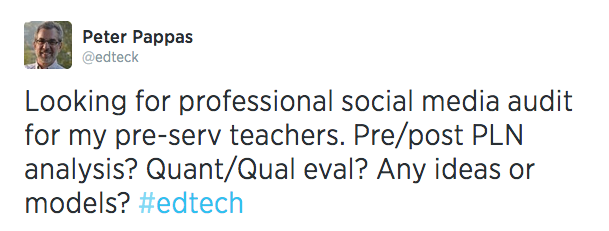
With more than 140 characters to work with, I posted the following to a number of my Google+ communities and LinkedIn groups.
 Within hours the replies started to come in. In less than 48 hours I had received enough feedback to collect them in Storify. View directly here or embedded below.
Within hours the replies started to come in. In less than 48 hours I had received enough feedback to collect them in Storify. View directly here or embedded below.
(Storify won’t collect G+ discussion threads or anything from LinkedIn. So I did my best with text only.)
How would you teach aspiring teachers how to effectively use social media to network and for their own professional growth? Add your ideas in the comment below.
Image credit: Vocational training for S.A.T.C. in University of Michigan, Ann Arbor. Class in Pole-Climbing in the course for telephone electricians, with some of their instructors. University of Michigan., ca. 1918 U.S. National Archives’ Local Identifier:165-WW-119A(1)
Boston Bombings: Close Reading A Media Frenzy
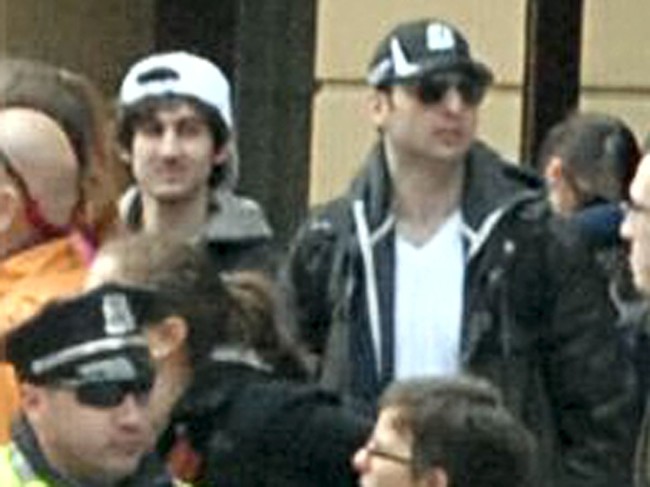 Here’s a suggestion for high school teachers. Postpone a lesson you had planned for next week and use the time to explore the cacophonous infosphere spawned by the apprehension of the suspects in the Boston bombings. If that media circus tells us anything, it’s that we need a lesson in digital hygiene and responsible use.
Here’s a suggestion for high school teachers. Postpone a lesson you had planned for next week and use the time to explore the cacophonous infosphere spawned by the apprehension of the suspects in the Boston bombings. If that media circus tells us anything, it’s that we need a lesson in digital hygiene and responsible use.
It’s also a good chance for students to hone their close reading skills. The events should be fresh in everyone’s mind. Ask students to reflect back on network news and social media coverage of the manhunt using these three critical thinking prompts:
- What did it say?
- How did it say it?
- What’s it mean to me?
To kick off the discussion, you might ask students to read James Gleick’s powerful New York Magazine piece “Total Noise,” Only Louder. He observes:
The Boston bombings, shootings, car chase, and manhunt found the ecosystem of information in a strange and unstable state: Twitter on the rise, cable TV in disarray, Internet vigilantes bleeding into the FBI’s staggeringly complex (and triumphant) crash program of forensic video analysis. If there ever was a dividing line between cyberspace and what we used to call the “real world,” it vanished last week. … We need to get smarter about the vectors of time and information flow. … It starts to feel as though we’re Pavlov’s dogs—subjects in a vast experiment in operant conditioning. The craving for information leads to behaviors that are alternately rewarded and punished. If instantaneity is what we want, television cannot compete with cyberspace. Nor does the hive mind wait for officialdom. While the FBI watched and tagged and coded thousands of images from surveillance cameras and cell phones, users on Reddit and 4chan went to work, too, marking up photos with yellow arrows and red circles: “1: ALONE 2: BROWN 3: Black backpack 4: Not watching.” Virtually everything these sleuths discovered was wrong. Their best customer was the New York Post, which fronted a giant photo of two “Bag Men”—who, of course, turned out to be a high-school kid and his friend, guilty of nothing but brown skin. If the watchword Wednesday was crowd-source, by Thursday it was witchhunt. Total Noise.
If anyone asks you why you’re deviating from your lesson plans, tell them you’re getting a head start on Common Core Standards such as:
- CCSS.ELA-Literacy.RH.6-8.8 Distinguish among fact, opinion, and reasoned judgment in a text.
- CCSS.ELA-Literacy.CCRA.R.8 Delineate and evaluate the argument and specific claims in a text, including the validity of the reasoning as well as the relevance and sufficiency of the evidence.
- CCSS.ELA-Literacy.CCRA.R.9 Analyze how two or more texts address similar themes or topics in order to build knowledge or to compare the approaches the authors take.
Image source / FBI
#Watertown #MITShooting: Unfiltered News vs Speculation
This morning, Twitter broke the story of the events in Watertown MA. Following the hashtags #Watertown and #MITShooting, I selected a few tweets from roughly 2:10- 2:15 AM Boston Time.
As I tried to sort fact and speculation, I was reminded of a post I did a few years ago What Happens in Schools When Life Has become an Open-book Test?
I grew up in an era of top-down information flow – book publishers, newspapers, magazines, network TV, radio. I was accustomed to someone else making decisions about what I should read, watch and listen to. They created information, I consumed it. … Fast forward to a digital age which has fractured the information flow – fragmenting it into ever smaller pieces: LP record > CD > single song download > ringtone. Now we are armed with gadgets that allow us to re-assemble the info bits; by-passing the curatorial function that had been served by the legacy mass media. Who needs a Walter Cronkite? I can be my own editor, reviewer, researcher and entertainment director. … What happens in schools when life has become an open-book test? … Students are adrift in a sea of text without context.
Note: A few hours has passed since these Tweets appeared and the connections between the Watertown event and the Boston Marathon bombing continue to unfold. Looks like Twitter’s crowdsourcing scooped the major new outlets. But are we ready to curate our own news?
How to Create A PLC with Google+ Hangout
I critiqued the “top-down vision of innovation in schools” in a post Innovations in Teaching and Learning: Top Down or Bottom Up?
Want to find out more about instructional innovation in action? That won’t cost you a thing either. Just jump on my Twitter feed and you find superb teachers willing to share their latest student projects. And that free flow of information contrasts with a second “top-down” approach to innovation in schools – the professional learning committee. Imagine being told that, “teachers will now attend PLC meetings.. and don’t forget to fill out the PLC report form and turn it in to your administrator.” No one at the top seems to notice that teachers who want to network have already created their own “bottom-up” support systems via the social web.
PLCs for singleton teachers?
A recent post by high school physics teacher Casey Rutherford, describes how he used Google+ Hangouts (free video conferencing) to create his own PLC. A Physics PLC: Collaboration at a Distance. Casey writes:
This year my school district, like many others, implemented PLCs (Professional Learning Communities) as the driving force behind how we collaborate to help students learn. The directive was that all teachers should meet in a PLC weekly for approximately 30 minutes. This sounds, and can be, great, but I had a problem. …. For 7 years I had been the only physics teacher. …
Enter Twitter. I’ve been on Twitter almost two years now, and I have learned more on Twitter in these two years than the previous six, which included a masters degree. Among other things I have managed to build a pretty awesome PLN (Personal Learning Network) that includes a couple hundred incredible physics and math teachers from around the country.
Casey posted a tweet with a link to Google doc soliciting members for his online PLC:
My name is Casey Rutherford. I am entering teaching for the 8th year, my 7th teaching physics, and my first using Modeling Instruction. I have a relatively odd request.
My school is implementing PLCs, certainly a worthy task. The problem is that at this point there is not a logical person with whom I would form a PLC. Thus my request. I am wondering if any of you would like to form an online PLC with me, working together approximately 30 minutes/week to compare student work. My thought is that we can do a lot with formative assessments, using photos of student whiteboards to form the basis for our conversations. I am, however, open to other ideas as well. …
What follows is Casey’s step-by-step description of how his team used a G+ Hangout to manage their PLC sessions. It includes details about managing the Hangout, using it to analyze student work, and building meaningful collegial relationships. It’s a very helpful post for anyone looking for practical information on using G+ Hangouts.
Hat tip to Marshall Memo for leading me to Casey’s piece.
Screenshot credit / Casey Rutherford


